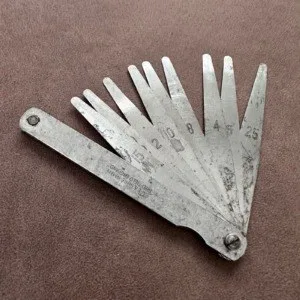The feeler gauge tool, a staple in mechanical and engineering fields, has a history dating back to the early 20th century. Developed as precision measurement became essential in the industrial age,
the feeler gauge allowed for accurate assessment of gaps and clearances between mechanical parts. Its invention marked a significant advancement in the maintenance and assembly of machinery, ensuring that components fit together with the necessary precision.
Usage of the Feeler Gauge Tool
Precision Measurement
Feeler gauges consist of a set of thin metal blades, each with a different thickness, calibrated to measure small gaps. These tools are indispensable in various applications:
Automotive Industry: Mechanics use feeler gauges to set spark plug gaps, valve clearances, and measure gaps between engine components.
Manufacturing: In manufacturing, feeler gauges help ensure that machine parts fit together correctly, maintaining product quality and operational efficiency.
Engineering: Engineers use feeler gauges in design and maintenance tasks, verifying the accuracy of assembled parts and machinery.
Versatility and Ease of Use
The feeler gauge’s simple design makes it versatile and easy to use. By selecting a blade of the appropriate thickness and inserting it into a gap, users can quickly and accurately measure the clearance. This simplicity, combined with its reliability, has made the feeler gauge a go-to tool in many precision-based industries

Leave a Reply